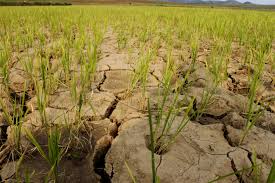Asia’s water woes take many forms — and they’re about to get worse
The centrality of water is a recurring theme in various religions. The Bible — largely written amid water scarcity — associates drought with the wrath of God. “By means of water,” says the Quran, “we give life to everything.” Hindu gods and goddesses related to water are tied to fertility or to new beginnings.
Asia, the world’s driest continent per capita, symbolizes the paradox of water: a giver of life that can also be a destroyer when it becomes a carrier of deadly microbes or takes the form of a flood.
Asia struggles with water problems of almost every kind. The region’s biggest natural disasters this century have been water-related: The tsunami that struck Japan’s northeastern coast in 2011 caused a triple nuclear meltdown at the Fukushima Daiichi nuclear plant, and the 2004 Indian Ocean tsunami left behind a huge swath of death and destruction.
Flooding this summer has caused fatalities and widespread damage in parts of southern China and eastern India, and a serious drought is ravaging countries as disparate as North Korea, Thailand and Vietnam. Contaminated water, meanwhile, continues to be a major problem across much of Asia, which has some of the world’s worst water pollution.
Unfortunately for Asia, these problems are set to become even worse. Global warming and El Nino — a warm, irregularly occurring current in the Pacific Ocean that can cause significant changes in temperature and rainfall — are triggering more frequent droughts and flooding, especially in the summer monsoon season.
El Nino events occur at unpredictable times, sometimes more than five years apart. The current El Nino threatens to inflict serious economic damage in South and Southeast Asia. The agriculture sector, the leading employer in many countries, is particularly vulnerable. According to a Citigroup report, prolonged drought and the resultant crop losses could lead to higher food prices in several Asian nations.
Over the longer term, freshwater supplies are likely to come under increasing strain as oceans rise and the intensity and frequency of storms and other extreme weather events increases. Cycles of severe flooding and drought brought on by climate change will render the availability of potable water even more uncertain. This could exact significant human and economic costs, especially in financially strapped countries such as densely populated Bangladesh — the world’s seventh- most populous nation.
A parched field in North Korea
North Korea says an unparalleled drought is currently exacerbating its food crisis. Pyongyang, having learned from a famine in the late 1990s that killed at least 600,000 people, has improved its agricultural management and set aside stockpiles of food, putting it in a somewhat better position to deal with the latest drought. But because copious amounts of water are needed for energy extraction, processing and production, North Korea’s severe water shortages have hit electricity generation, leading to frequent blackouts.







